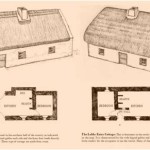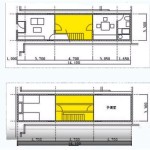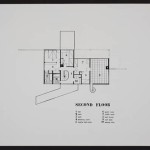How to Draw a House Plan: A Comprehensive Guide
Creating a house plan is a crucial step in the home-building process. Whether you're embarking on a new construction project or renovating your current home, a well-drawn house plan serves as a blueprint for every aspect of your dwelling.
Drawing a house plan may seem daunting, but with careful planning and attention to detail, you can create a functional and aesthetically pleasing design. Here's a comprehensive guide to help you get started:
1. Determine Your Needs and Requirements
Before you start drawing, take the time to consider your lifestyle and the specific requirements of your household. Determine the number of bedrooms, bathrooms, and other rooms you need. Consider the potential of future expansion and any unique features you desire, such as a home office or a large kitchen.
2. Choose a Suitable Scale
The scale of your house plan is important for both accuracy and readability. Common scales used for house plans include 1/4 inch = 1 foot and 1/8 inch = 1 foot. Choose a scale that provides sufficient detail while allowing you to fit the entire plan on a single sheet of paper.
3. Draw the Exterior Outline
Start by sketching the exterior outline of your house, including the foundation, walls, and roofline. Use straight lines and precise measurements to ensure accuracy. Pay attention to the proportions of the different elements and ensure they are in harmony with each other.
4. Partition the Rooms
Once the exterior outline is in place, divide the interior space into individual rooms. Use solid lines to represent walls and indicate the location of doors and windows. Consider the flow of traffic and the functionality of each room as you create the floor plan.
5. Add Details and Fixtures
With the basic layout complete, you can start adding details and fixtures. Indicate the location of appliances, plumbing fixtures, built-in storage, and any other important features. Use different symbols or notations to represent different elements and ensure clarity.
6. Draw Electrical and Plumbing Plans
In addition to the floor plan, it's important to draw separate electrical and plumbing plans. These plans indicate the location of electrical outlets, switches, plumbing pipes, and fixtures. Make sure these plans are consistent with the floor plan and provide sufficient detail for installation.
7. Scale and Dimension the Plan
Once your house plan is complete, check the scale and dimensions carefully. Ensure that all measurements are accurate and that the scale is consistent throughout the plan. Add dimension lines to indicate the length and width of walls, rooms, and other features.
8. Seek Professional Review
If you're planning to use your house plan for building or renovation purposes, it's recommended to have it reviewed by a professional architect or engineer. They can ensure the plan meets building codes and industry standards and provide valuable feedback to improve the design.

Floor Plan Creator And Designer Free Easy App

Draw Floor Plans With The Roomsketcher App

Draw Floor Plans In Half The Time Cedreo

How To Draw A Floor Plan The Simple 7 Step Guide For 2024

Make Your Own Blueprint How To Draw Floor Plans Drawing House Sketch Plan

Draw Floor Plans With The Roomsketcher App

Easy Home Building Floor Plan Cad Pro

How To Draw A Floor Plan By Hand Step Guide

Make Your Own Blueprint How To Draw Floor Plans

How To Draw A House Plan Step By








